#Sirsasana Benefits
Text
Celebrate Yoga Day 2024: Transform Your Health with Headstand (Sirsasana)
Introduction: Making sense of Understanding – The Journey to Headstand for Yoga Day 2024
As day breaks on Yoga Day 2024, we are on the edge of rediscovering change in our bodies and lives. Sirsasana or headstand is not an asana; it is an agreement of strength, attention and balance. In this all encompassing reframe we plunge straight into ancient experiences through Headstand with its emblematic…

View On WordPress
#Advanced Yoga Poses#Core Strength Yoga#Emotional Benefits of Yoga#Headstand Pose#Inversion Yoga Pose#Mental Clarity through Yoga#Mindfulness and Yoga#Sirsasana Benefits#Yoga and Wellbeing#Yoga Day 2024#Yoga for Balance#Yoga for Concentration#Yoga Posture Guide#Yoga Practice Tips
0 notes
Video
Sirshasana || Shirshasana Kaise Kare || Sirsasana Benefits #yoga #yogapo...
Sirshasana : The Headstand That Will Make You Feel Amazing
Sirshasana, also known as the headstand, is a classic yoga pose that is said to have many benefits for both the mind and body. It is an inverted pose, which means that the head is lower than the feet. This inversion reverses the flow of blood in the body, which can have a number of positive effects.
The Benefits of Sirshasana
Some of the benefits of Sirshasana include:
1.Improved circulation
2. Increased energy levels
3.Reduced stress
4.Improved focus and concentration
5. Increased flexibility
6.Strengthened neck and shoulders
7.Improved digestion
8.Boosted immune system
9.Improved balance
10.The Risks of Sirshasana
While Sirshasana has many benefits, it is important to be aware of the risks before attempting it. These risks include:
1.Headaches
2.Dizziness
3.Nausea
4.Lightheadedness
5.Neck pain
6.Shoulder pain
7. Injury to the spine
How to Do Sirshasana
Preparation
Before attempting Sirshasana, it is important to warm up your body. This can be done by doing some light stretches, such as cat-cow pose or sun salutations. You should also make sure that you are in a well-ventilated area and that you have a yoga mat to protect your head.
Entry
To enter Sirshasana, start by kneeling on your mat with your hands shoulder-width apart. Place your forearms on the mat, with your fingers interlaced. Then, slowly lift your knees up off the mat, one at a time. Once your knees are off the mat, straighten your legs and lift your hips up. Your body should now be in a straight line from your head to your heels.
Maintaining the Pose
Once you are in the pose, try to relax your body and breathe deeply. You may want to keep your eyes closed to help you focus. Hold the pose for as long as you are comfortable, and then slowly lower yourself back down to the mat.
Exit
To exit the pose, slowly bend your knees and lower your hips down to the mat. Once your hips are on the mat, gently lower your legs down.
Common Mistakes to Avoid
Some common mistakes to avoid when doing Sirshasana include:
1. Not warming up properly
2. Not using a yoga mat
3.Lifting your head up too high
4. Arching your back
5. Locking your knees
6. Putting too much weight on your head
7. Modifications for Beginners
If you are a beginner, there are a few modifications that you can make to make Sirshasana easier. These modifications include:
1.Placing your hands on a wall instead of the mat
2.Using a chair to support your legs
3.Doing a supported headstand against a wall
4. Advanced Variations of Sirshasana
Once you have mastered the basic version of Sirshasana, you can try some advanced variations. These variations include:
1.Handstand
2.Tripod headstand
3.Shoulder stand
4.Forearm stand
Conclusion
Sirshasana is a challenging but rewarding yoga pose. If you are looking for a pose that can improve your circulation, energy levels, and focus, then Sirshasana is a great option. However, it is important to be aware of the risks before attempting this pose. If you are a beginner, it is best to start with modifications and then gradually work your way up to the full pose.
You May Also Like : Why is Yoga for Everyone
#youtube#sirsasana#shirshasana#sirshasana#sirsasana for beginners#sirsasana yoga#janu sirsasana#sirsasana kaise kare#shirshasana for beginners#shirshasana kaise kare#sirsasana benefits#hirshasana kaise karen#shirshasana karne ke fayde#janu sirshasana#how to do janu sirsasana#janu sirsasana kaise kare#step bu step janu sirsasana#janu sirsasana karne ke fayde#shirshasana yog#como fazer sirshasana#sirsasana prashant#benefits of sirshasana
0 notes
Text

Janu Sirsasana C: The Seated Head-to-Knee Pose
Janu Sirsasana C, or the Seated Head-to-Knee Pose, is a rejuvenating yoga asana that combines a deep stretch with calming breathwork. This seated forward bend targets the hamstrings, spine, and shoulders, promoting flexibility and relaxation.
How to Practice:
Sit with one leg extended and the other sole against the inner thigh.
Inhale, lengthen the spine, and exhale while bending forward from the hips.
Reach for the extended foot, keeping the spine straight.
Engage in slow, deep breaths, surrendering into the stretch.
Benefits:
Stretches hamstrings, groins, and spine.
Calms the mind and reduces stress.
Stimulates abdominal organs, aiding digestion.
Improves flexibility in the hips and lower back.
Tips for Beginners:
Use a strap around the foot if reaching it is challenging.
Focus on lengthening the spine before folding forward.
Practice regularly for increased flexibility.
Contraindications:
Avoid if you have a knee injury.
Pregnant individuals should modify with props.
Consult a healthcare professional for back issues.
#yoga#rishikesh#yogateachertraining#adiyogaashram#ashtangavinyasa#ashtangayoga#yogainspiration#primaryseries
5 notes
·
View notes
Text
Discover Your Inner Yogi: 31 Essential Poses for Beginners to Practice at Home
Embarking on the path of yoga is a fantastic decision for numerous reasons.
Beyond the physical benefits of increased strength, flexibility, and balance, yoga serves as a powerful tool for stress reduction through specialized breathing techniques known as pranayama.
Yoga is diverse, offering various poses to cater to different needs.
Now, let's delve into the joy of yoga with a focus on 31 essential poses for beginners to practice at home. These foundational poses not only serve as a physical workout but also contribute to mental well-being.
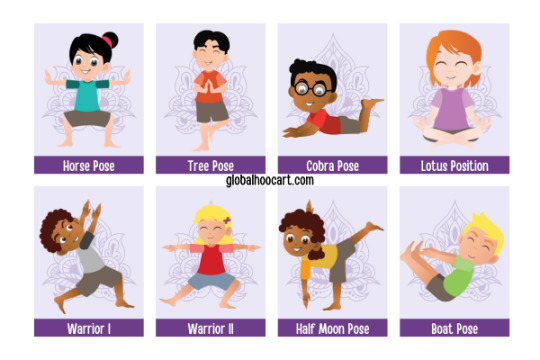
1. Downward Facing Dog (Adho Mukha Svanasana): A classic yoga pose that can be tricky for beginners, emphasizing weight distribution and heel stretching.
2. Mountain Pose (Tadasana): Equally important as Downward Facing Dog, it focuses on alignment, grounding, and spine lengthening.
3. Warrior I (Virabhadrasana I): A standing pose emphasizing forward-facing hips, crucial for building strength.
4. Warrior II (Virabhadrasana II): Similar to Warrior I but with hips facing the side, promoting openness and strength.
5. Extended Side Angle (Utthita Parvakonasana): Involving a modification for beginners, it offers a gentle stretch with forearm support.
6. Triangle Pose (Utthita Trikonasana): Another essential pose, engaging leg strength and enhancing flexibility in multiple areas.
7. Standing Forward Bend (Uttanasana): An easy pose for beginners, promoting spine flexibility and relaxation.
8. Reverse Warrior (Viparita Virabhadrasana): Combining a stance similar to Warrior I with a gentle side bend or backbend.
9. Garland Pose (Malasana): A squatting pose that stretches muscles around the pelvis, beneficial for hip flexibility.
10. Half Forward Bend (Ardha Uttanasana): Also known as Flat-Back Forward Bend, it contributes to improving overall body awareness.
11. Pyramid Pose (Parsvottanasana): A standing forward bend made more accessible for beginners with the use of yoga blocks.
12. Raised Hands Pose (Urdhva Hastasana): Starting from Mountain pose, it offers a full-body stretch, ideal for beginning your practice.
13. Low Lunge: A standing pose emphasizing proper alignment for a beneficial stretch, with modification options for support.
14. Tree Pose (Vrksasana): An excellent introduction to balancing postures, encouraging stability and mindfulness.
15. Downward Facing Dog Split: A basic yoga pose for beginners focusing on core strength and balance.
16. Plank Pose: Not just a balancing pose but a fundamental exercise for building core strength and stability.
17. Cat-Cow Stretch (Chakravakasana): A gentle backbend sequence enhancing body awareness, especially beneficial for beginners or those with back pain.
18. Bridge Pose (Setu Bandha Sarvangasana): A gentle backbend for beginners, enhancing spine extension and countering the effects of prolonged sitting.
19. Cobra Pose (Bhujangasana): A fundamental backbend that strengthens back muscles and promotes flexibility.
20. Knees, Chest, and Chin (Ashtanga Namaskara): An essential part of the sun salutation series, serving as an alternative to Chaturanga Dandasana.
21. Staff Pose (Dandasana): A seated version of Mountain pose, offering alignment guidance for various seated poses.
22. Cobbler's Pose (Baddha Konasana): A comfortable stretch for inner thighs, often using props for support.
23. Easy Pose (Sukhasana): A cross-legged sit made more comfortable with props, promoting flexibility and undoing the effects of prolonged chair sitting.
24. Half Lord of the Fishes Pose (Ardha Matsyendrasana): A seated twist benefiting spinal mobility and aiding digestion.
25. Head to Knee Pose (Janu Sirsasana): Easier than traditional forward bends, offering a gentle stretch one leg at a time.
26. Seated Forward Bend (Paschimottanasana): A fantastic hamstring stretch targeting the entire back of the body.
27. Seated Wide Angle Straddle (Upavistha Konasana): A wide-legged forward bend providing a unique stretch and focusing on proper form.
28. Happy Baby Pose (Ananda Balasana): Balancing effort and ease, this delightful pose offers a gentle stretch for the back, hips, thighs, and ankles.
29. Supine Spinal Twist (Supta Matsyendrasana): A passive twist promoting flexibility, relaxation, and a sense of completion to your practice.
30. Child's Pose (Balasana): A resting pose that allows you to take a break whenever needed, promoting a gentle stretch and relaxation.
31. Corpse Pose (Savasana): A serene conclusion to your session, allowing a smooth transition from the yoga mat to the rest of your day.
In conclusion, these 31 basic yoga poses for beginners at home offer a comprehensive and accessible introduction to the joy of yoga. Remember, yoga is for everyone, and the journey is as important as the destination. Enjoy the practice, embrace self-awareness, and savor the harmonious blend of effort and relaxation that yoga brings to your life.
3 notes
·
View notes
Photo
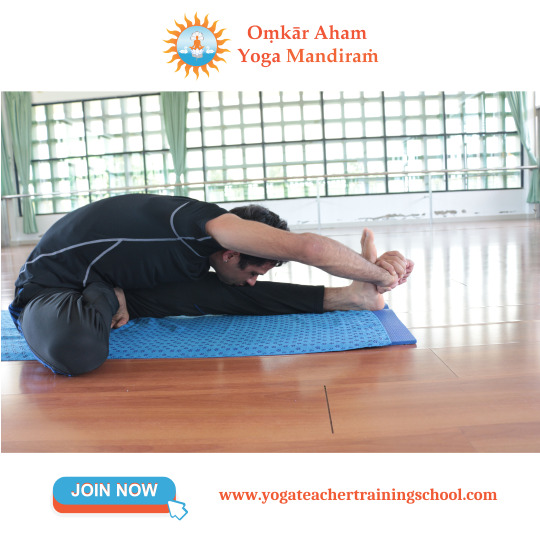
Benefits of janu sirsasana
*It calms the brain and eliminates mild depression.
*It stretches the spine, liver, spleen, hamstrings, groins, and shoulders.
*Stimulates the kidneys and liver.
*Reduces pain in the waist and legs.
*Helps to get rid of belly fat.
*Improves digestion.
*Relieves symptoms of menopause.
*Effectively strengthens rib bones.
*The asana also makes the spine flexible.
Get In Touch With Omkarah Yoga Mandiram In Rishikesh!
Contact us at:
✔️WhatsApp/Call: +91-9997744876
✔️Mail us at: [email protected]
#janusirsasana#yoga#yogateachertraining#yogalove#yogalife#yogajourney#yogapose#yogagirl#rishikesh#yogaeverywhere#yogatime#flexibility#namaste#ashtanga#vinyasa#yogainspiration#yogacommunity#YogaChallenge#yogini
3 notes
·
View notes
Text
INCREASE HEIGHT WITH THE HELP OF YOGA POSES OR ASANAS..
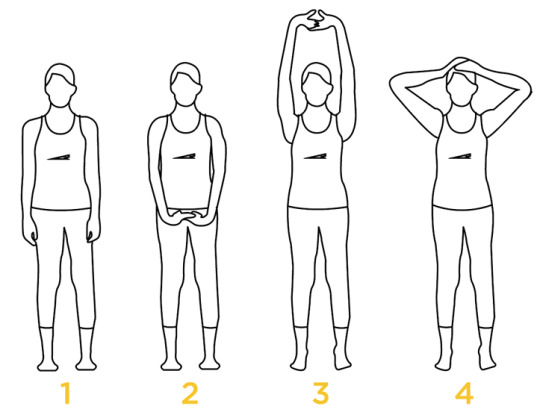
Are you sick of feeling underappreciated because of your height? Do you aspire to command respect and confidence among any crowd? You need look no further than the age-old discipline of yoga. Yoga offers a number of asanas (poses) that can assist accelerate development and enhance your height in addition to its myriad other mental and physical advantages. In this article, we'll look at a few yoga poses that have been scientifically proven to provide quick, observable benefits. Let's start a journey to realize your growth potential, so spread out your mat and get ready!
**1. Tadasana (Mountain Pose)**
**2. Trikonasana (Triangle Pose)**
**3. Bhujangasana (Cobra Pose)**
**4. Adho Mukha Svanasana (Downward-Facing Dog)**
**5. Vrikshasana (Tree Pose)**
**6. Salamba Sirsasana (Supported Headstand)**
On your quest to gain more height, incorporating these yoga asanas into your daily regimen could be a game-changer. To get quick and noticeable results, you need consistency, patience, and good technique. Always pay attention to your body, move slowly, and take pleasure in the experience. You can maximize your potential for growth and stand tall and self-assured by combining these asanas with a healthy lifestyle. As a result, enjoy the benefits of yoga and watch as your height increases.
TO READ THE DETAILED ANSWER AND READ THE FULL EXPLANATION OF ABOVE ASANAS WITH ILLUSTRATIONS, THEN CLICK ON THE FOLLOWING LINK :
1 note
·
View note
Text

Headstands, also known as Sirsasana, can have many benefits, including:
🌈Strengthens upper body🌈The gravitational force of the headstand draws blood to the brain, which can stimulate the pituitary gland and rejuvenate the mind. It can also strengthen the forearms, core muscles, abs, and neck.
🌈Builds core strength🌈The core holds the body upside down and maintains balance, so regular practice can help build a strong core.
🌈Improves digestion🌈Gravity can help move stuck materials, release unwanted gasses, and improve abdominal organs.
🌈Relieves stress🌈The increased blood flow to the brain can have a calming effect, reduce the production of cortisol, and relieve anxiety.
🌈Increases focus🌈 Improved blood flow to the mind can help improve mental capacity and increase focus and mindfulness.
🌈Stimulates the lymphatic system🌈Headstands can help drain lymphatic fluid, which can help detoxify the body.
🌈Flushes out adrenal glands🌈The increase in oxygen levels from the headstand can help activate the adrenal glands, which can help you feel calm and relaxed and may help you sleep better.
1 note
·
View note
Text
Yoga for Diabetes: Simple Practices for Better Health
Have you been searching for the best yoga classes near me to help manage your diabetes? Look no further! Yoga offers a holistic approach to improving overall health, including managing diabetes. In this article, we'll explore simple yoga for diabetes practices specifically designed for individuals with diabetes. Whether you're a seasoned yogi or a beginner, these accessible techniques can help you unlock better health and find a renewed sense of balance. Just like a soothing melody calms the mind, yoga's gentle movements and breathing exercises can harmonize your body, reducing the impact of this chronic condition.

Understanding Diabetes and Yoga's Benefits
How Yoga Helps Manage Diabetes
Diabetes is a long-term illness that alters your body's ability to metabolise glucose or blood sugar. While medication and diet play a crucial role in managing diabetes, incorporating yoga into your routine can offer numerous benefits. Yoga asanas help reduce blood sugar, increase insulin sensitivity and aid in weight loss. Additionally, deep breathing exercises (pranayama) and meditation reduce stress, a significant contributor to diabetes complications.
Simple Yoga Poses for Diabetes Management
Standing Poses
Standing poses, such as Mountain Pose (Tadasana) and Tree Pose (Vrksasana), strengthen your legs and improve balance. These poses also engage your core muscles, aiding digestion and improving insulin sensitivity.
Seated Poses
Seated poses like Bound Angle Pose (Baddha Konasana) and Head-to-Knee Forward Bend (Janu Sirsasana) are gentle yet effective in improving flexibility and promoting better blood circulation.
Lying Poses
Lying poses, such as Supine Spinal Twist (Supta Matsyendrasana) and Legs-Up-the-Wall Pose (Viparita Karani), reduce stress and improve blood flow, which is crucial for managing diabetes.
Breathing Techniques for Diabetes Control
Pranayama and Its Impact
Pranayama, or yogic breathing exercises, play a vital role in diabetes management. Practices like Alternate Nostril Breathing (Nadi Shodhana) and Bee Breath (Bhramari Pranayama) can lower blood pressure, reduce stress and improve overall well-being.
The Mind-Body Connection: Meditation and Diabetes
Stress Reduction and Mindfulness
Diabetes can be a stressful condition and stress can further exacerbate the symptoms. Meditation, an integral part of yoga, promotes mindfulness and reduces stress levels, leading to better diabetes management. Practices like breath awareness and body scans can cultivate a sense of calm and balance.
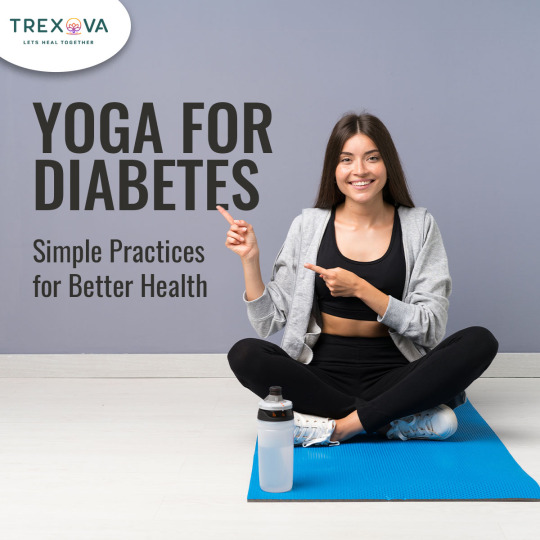
Incorporating Yoga into Your Routine
Finding the Best Yoga Classes Near You
To get started with yoga for diabetes, consider finding a qualified instructor who understands your specific needs. Search for “best yoga classes near me” or consult your healthcare provider for recommendations on suitable classes or studios.
At-Home Yoga Practice
If attending classes is not feasible, you can practice yoga at home. Many online resources and mobile apps provide guided yoga sessions tailored for diabetes management, making it convenient to incorporate yoga into your daily routine.
Precautions and Tips for Yoga with Diabetes
While yoga is generally safe, individuals with diabetes should take certain precautions. Always consult your healthcare provider before starting a new exercise regimen, especially if you have complications like neuropathy or retinopathy. Stay hydrated, monitor your blood sugar levels and avoid poses that strain your body excessively.
Conclusion
Yoga offers a holistic approach to managing diabetes and promoting physical, mental and emotional well-being. By incorporating simple yet powerful yoga practices into your routine, you can improve insulin sensitivity, reduce stress and cultivate a more balanced lifestyle. Whether you attend "best yoga classes" near you or practice at home, embrace the mind-body connection and experience the transformative benefits of yoga for diabetes.
FAQs
1. Can yoga help reverse diabetes?
While yoga cannot directly reverse diabetes, it can help manage the condition by improving insulin sensitivity, promoting weight loss and reducing stress, which are all crucial factors in diabetes management.
2. Is yoga safe for people with diabetes-related complications?
Yoga is generally safe, but individuals with diabetes-related complications like neuropathy or retinopathy should consult their healthcare provider and take necessary precautions before starting a yoga practice.
3. How often should I practice yoga for diabetes management?
Ideally, aim for at least 3-4 sessions per week, with each session lasting 30-60 minutes. Consistency is key to experiencing the full benefits of yoga for diabetes management.
4. Can I practice yoga if I'm not flexible?
Absolutely! Yoga is not just about flexibility; it's about creating a mind-body connection and embracing the journey. With regular practice, you will gradually improve your flexibility and reap the benefits of yoga for diabetes management.
5. What's the best time to practice yoga for diabetes management?
While there's no definitive best time, many practitioners find morning or evening sessions beneficial. Choose a time that works best for your schedule and allows you to practice yoga without rushing or stress.
0 notes
Text
Sirsasana or Headstand is one of the advanced postures in Yoga. The posture involves balancing on the head and is one of the most difficult poses to master. It requires a great amount of strength in the core, shoulder arms, and flexibility in the hamstrings to do the pose correctly and hold it for some time. Further, it also requires focus and concentration to perform this pose correctly.
Beginners should perform this posture in the presence of Yoga trainers so that the trainer can help to correct the alignment of the body if done incorrectly, it can lead to serious injuries over the head, neck or spine.
As a beginner, I always found this posture very fascinating and spent hours scrolling through videos to search how to do this posture correctly different people teach different techniques to master this pose i.e. with the help of a chair, wall, or starting through a single leg, etc., however, I have explained the technique which worked out best for me. Further, some videos even claim that this pose can be mastered in a week. However, the truth is that balancing in this posture takes time… sometimes a year, depending upon the capacity of an individual.
We have described below the benefits of this posture, how to start learning this posture for beginners, contraindications and one of the most important parts is how to maintain balance and fall in this posture.
What Is Sirsasana?
The word Sirsasana consists of two Sanskrit words, Sirsa and Asana. Sirsa means head, and Asana means “posture”. It is a posture which is performed by way of balancing on the head.
It is also called as king of all poses, as it energizes the entire body and speeds blood circulation towards the head and provides a lot of benefits to the entire body.
Know more about about sirsasana and zumba dance in sector 57, gurgaon on Fitness and More Blog.
0 notes
Text
10+ Yoga Poses for Diabetics: A Step-by-Step Guide
10+ Yoga Poses for Diabetics: A Step-by-Step Guide
🧘 Vajrasana (Thunderbolt Pose):
Helps control blood glucose levels 🩸 by stimulating organs like the liver and pancreas, improving insulin secretion.
Calms the mind 🧘♂️ and stabilizes the body.
🏔 Tadasana (Mountain Pose):
Enhances overall body awareness and balance ⚖️.
May help regulate blood sugar levels indirectly by promoting overall well-being.
🐱🐄 Marjariasana (Cat-Cow Pose):
Aids digestion 💩 and helps relieve constipation.
Supports overall metabolic health, which can benefit individuals with diabetes.
🐕 Adho Mukha Svanasana (Downward-Facing Dog):
Improves blood circulation 💓 and strengthens the entire body.
May contribute to better blood sugar control.
🔺 Trikonasana (Triangle Pose):
Stretches and strengthens various muscle groups 💪.
May help regulate blood pressure and improve overall health.
🏹 Virabhadrasana I (Warrior I Pose):
Strengthens the legs, back, and arms 💪.
Supports overall fitness, which is beneficial for managing diabetes.
🌉 Setu Bandhasana (Bridge Pose):
Stimulates abdominal organs, including the pancreas.
May contribute to short-term decreases in fasting blood sugar levels.
🧘♂️ Janu Sirsasana (Head-to-Knee Forward Bend):
Relieves stress and calms the mind 🧘♀️.
May indirectly impact blood sugar levels by promoting relaxation.
🌀 Supta Matsyendrasana (Supine Spinal Twist):
Aids digestion 💩 and stimulates abdominal organs.
May have positive effects on overall metabolic health.
💀 Savasana (Corpse Pose):
Promotes relaxation and stress reduction.
May indirectly support blood sugar management by reducing stress.
#diabetes#diabetic#healthy recipes#type 2 diabetes#diabetesblog#healthyhabits#healthguide#health is wealth#health insurance#healthybaking
0 notes
Text
yoga
Yoga plays a vital role in each and everyone's life. It should be a mandatory part of one's life to maintain a healthy lifestyle. Many sorts of yoga exercises help people to keep away from serious problems such as depression, anxiety, and many more. It keeps one's mind relaxed the whole time. If any person is in tension he or she should do meditation in daily routine which will relax them. Yoga has many other benefits.

Rather than this, some people don't like to go gym. But they want to lose weight so yoga is the best alternative way for them to reduce weight. Those people who are suffering from back problems and have stiffness in their muscles. They can do yoga make themselves comfortable and easily move from one place to another without any pain. Yoga asanas can increase flexibility, concentration, and strength in the body.
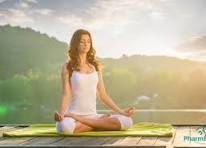
There are many different asanas for problems such as sirsasana, which help boost memory and provide a powerful mind. Secondly, Halasana helps to reduce back pain by stretching the body. Thirdly, Trikonasana helps balance our body and finish all stiffness in the body.
last but not least, matyaasnas which is also known as fish posture helps to correct the shoulder posture and help in improving neck muscles. Yoga is very efficient for women doing household chores to improve body level. Even working people can also do small asanas while working in an office sitting on a chair it will not create any problems with muscles and they can comfortably work.
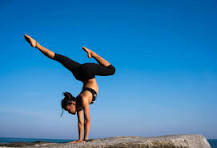
Yoga helps in reducing heart-related problems like heart attack and stroke attack. it makes blood flow smoothly through veins. From the view of people, yoga is the best therapy to get rid of medicines and problems.
0 notes
Text

🌟 Why practice Sirsasana? 🤸♂️
👉 Boosts Blood Circulation: Elevating your legs and body increases blood flow to the brain, enhancing mental clarity.
👉 Strengthens Core Muscles: Engages your core, promoting abdominal strength and stability.
👉 Improves Balance and Focus: Cultivates a sense of balance, sharpening concentration and mind-body connection.
👉 Stimulates the Lymphatic System: Aids detoxification by stimulating lymphatic drainage.
👉 Relieves Stress and Anxiety: Inversion helps calm the nervous system, promoting relaxation.
👉 Enhances Respiratory Function: Deepens breath capacity, benefiting respiratory health.
Ready to elevate your practice? 🧘♀️ Join us at Bali Yog Shala for bali yoga training for a transformative yoga experience!
#yoga teacher training#yoga retreat#yoga training#bali yog shala#learn yoga in bali#yoga teacher#100 hours yoga teacher training
0 notes
Video
youtube
How to do Sirsasana for beginners #sirsasana #yoga #shorts #viral #fitne...
Boost Brainpower with Headstand
Discover the benefits and challenges of Sirsasana (headstand), a powerful yoga pose that can improve your strength, flexibility, and mental clarity. Learn how to practice safely, overcome common difficulties, and reap the full rewards of this inversion.
Read More
#youtube#yogaposes#yogaeveryday#yoga#yogamotivation#sirsasana#yogapractice#dailyyoga#yoga routine#morningyoga#fitness#fitnessmantram#yogagirl#nakedyoga#nudeyoga
1 note
·
View note
Text
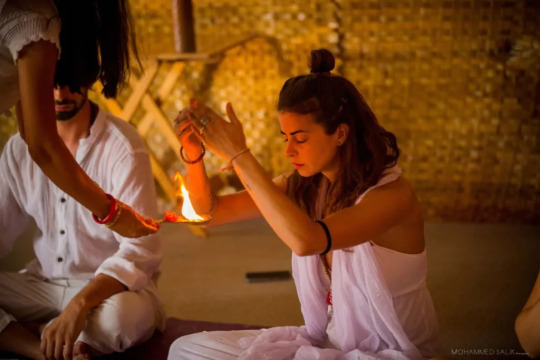
Yoga is a very ancient ritual that focuses on building strength and flexibility when we talk about external benefits. It is very essential to mention here, that yoga also has other benefits related to mental, emotional, and spiritual wellbeing. Some of the activities that are covered within this huge ancient storehouse of knowledge and divinity are asanas, Pranayama, meditation, bandhas, mudras, Satkarma kriyas, and mantra chanting. If you happen to visit a yoga school in India, you will come across these.
Now, coming back to the physical well-being part, yoga can be done by almost any age. Moreover, you can start doing yoga when you have crossed sixty years, as well. Patients who have undergone some kind of trauma, surgery, or are suffering from chronic pain, can also practice yoga. It acts as an effective pain reliever for the back, neck, hips, shoulders, and joints. Yoga can help you to manage your ailments and live a normal life like all others.
Yoga For Flexibility – The Way It Is Done In India
If you practice yogic exercises on a regular basis, you will experience increased flexibility and range of motion. Furthermore, your vitality will increase and so will your metabolism rate. You may also lose weight in the process. There are various poses that you can perform in the realm of yoga. Yoga also helps in removing soreness and tightness in the joints. When you are more flexible the body will not face injuries often. Additionally, you will recover faster from any injury.
Some of the best yoga styles which can lead to increased flexibility are Yin yoga, Ashtanga Yoga and Vinyasa Yoga. All these come under Hatha Yoga. Hatha Yoga mainly makes the body stable and strong. Let us find out more about Yin Yoga.
Yin Yoga – This is one of the yoga forms, in which you need to hold each pose for more than 5 minutes. Some seasoned yoga practitioners can also hold the poses for more than that. The body relaxes a lot and tends to become more flexible, when you hold the poses for a long time. It also improves the strength of the connective tissues.
Ashtanga Yoga – It is a dynamic form of yoga, where you perform a series of poses one by one. The teacher will instruct you on the sequence, according to the limits of your body. Similarly, Vinyasa is another style that you can do today. It increases flexibility and also the range of motion. You flow from one pose to another in the Vinyasa style.
Let us delve into a few yoga poses, which you can do regularly to increase flexibility. You can learn the poses and their benefits in a yoga teacher training, as well.
Yoga Poses For Flexibility
Adults who have never done yoga before can also practice the above yoga forms to increase their flexibility and range of motion. Here are the poses for you.
Janu Sirsasana – It is one of the best poses for flexibility, which is suitable for all ages. You can also work on the range of motion in the hips, back, and thighs. The blood flow towards the abdomen also increases as a result of this pose. You can do it on an empty stomach. Extend the right leg in front of you, and press the left foot inside the thigh of the right leg. While inhaling, you must raise both your arms. Exhale and bend at the hips, and fold forward. You have to face towards the outstretched leg. You must hold the right foot, with both hands for maximum results. Hold the position for a few seconds and then repeat the same thing on the other side.
Dhanurasana – This is another flexibility enhancing pose, which you can do, to increase the body’s range of motion. This is an intermediate level pose which can help in increasing the flexibility of the core muscles. Regularly practicing this pose, also affects the muscles in the back, chest, and legs. You get a full-body workout through this yogic asana. You can lie down on the floor on your belly. The arms will be placed by your side. Bend the knees, and try to hold the ankles, with both your hands. You have to create a pull to move the upper body from the floor. You have to keep looking forward while doing this pose. Take regular breaths for maximum comfort. Hold the pose for a few seconds. Release yourself from the pose and repeat again.
Anjaneyasana – Also called the low lunge, this is an extremely important pose for hip flexibility. This is one of the poses, which can help in lengthening the spine. Your hips also open up, in the process. You can build muscle as well, through this asana. You can do this pose under the trained experts at the yoga school in India. The spine also gets a good stretch, when you bend the body backwards. Holding your balance is extremely crucial in this pose.
Halasana – If you are aiming at shoulder and neck flexibility, then you should practice this asana. This is a great intermediate level pose in yoga that removes all the tension from your neck, shoulders, and spine. If you find it difficult to reach the floor on the other side of your head, with the feet, then you can also place them on a chair. It will help you ease of the tension a bit.
Final Words
When you are doing any yoga pose for flexibility, you must ensure to maintain a few precautions. Avoid forcing yourself into any pose. You should always do what you are comfortable with. You have to listen to your body, so that you do not get hurt. If the body shows signs of discomfort, like pain or stress, then you should stop right away.
Performing the above poses regularly under trained experts, can help you to increase your range of motion. Moreover, you will also be able to tone your muscles and make them more powerful. Join a yoga class in India today to get the most out of the yogic practice. Train under the best, for maximum efficacy.
0 notes
Text
Basic Sitting Postures with Benefits
Basic Sitting Postures with Benefits
JANU SIRSASANA: Correct foot placement
Sit up straight with legs evenly extended in front. Bend the right leg at the knee and place the foot so that the heel is in the right groin and the front of the foot touches the left thigh. Turn the foot so that the bottom of the foot is facing upward and press the knee back to form an obtuse angle with the body. This position will be difficult at first; don't force it. Put a folded blanket under the knee and also under the hips. Gradually the knee will move farther back. Just keep the foot correctly positioned.
JANU SIRSASANA: Correct, perfect posture
Having positioned the foot and knee correctly, stretch the left leg out, keeping the leg firmly on the mat. Settle the heel firmly and stretch the toes up. (The heel should pull gently away from the ankle.) Now inhale and bend forward over the straight leg, catching the foot with both hands if possible. Beginners should bend only as far as they can without rounding the back. When this posture is done correctly and completely, the body will roll forward over the extended leg, absolutely flat from the tail bone to the head. Stay there breathing normally for as long as you can. Inhale, release the handhold, come up smoothly, straighten the bent leg and relax. Repeat on other side.
JANU SIRSASANA: Wrong posture
The heel is not positioned against its own thigh. The knee has not been pushed back as far as possible to form an obtuse angle. The back is humped and curved because the pelvis is jammed and unable to lift properly. Instead of a smooth, complete stretching of the spine, the lumbar is over-stretched and the rest of the spine constricted. The left leg is not flat on the floor.
TRIANG MUKHAIPADA PASCHIMOTTANASANA: Sitting, forward-bending pose over one leg
This posture generally follows the previous one. Sit with your legs stretched in front. Bend the right leg so that the right foot is near the right hip. The toes should point back. The right calf presses against the right thigh. The body will tilt in this position so put a small folded towel under the left buttock to keep the hips level and the forward stretch even and extended. Hold the left foot with both hands, inhale and bend forward, keeping both knees together as you stretch forward over the straight leg. Many students will find it difficult in this position to even take hold of the foot of the outstretched leg. Do not despair. Just hold the knee, shin or ankle, and sit, breathing deeply, in whichever position represents your best extension. If the back is tight and the spine inflexible, this will take time. Release the hold and straighten the bent leg. Repeat on the other side.
0 notes